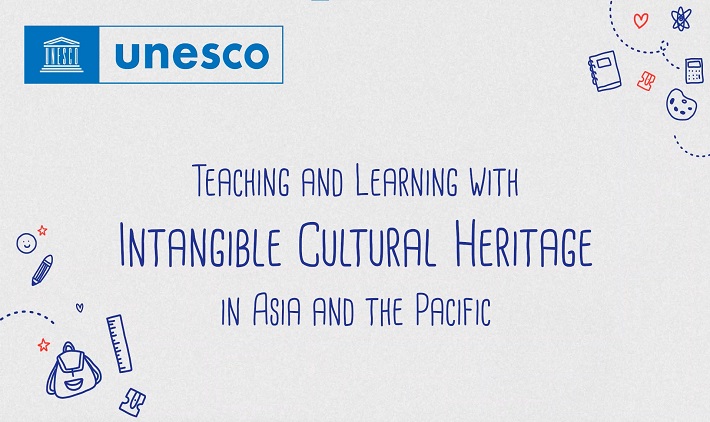Intangible Cultural Heritage, the Link between Education and Life
 |
| Animation series: Teaching and Learning with Intangible Cultural Heritage in Asia and the Pacific |
ICHCAP has been implementing the project called teaching with ICH in schools in cooperate with the UNESCO Bangkok Office and APCEIU to help future generations grow as participants in the safeguarding living heritage.
As part of the project, the UNESCO Bangkok Office has produced an animation series to see how various stakeholders such as teachers, students, parents, and communities, can integrate ICH into school subjects.
There are six animations in the series, and each episode presents a variety of approaches to teach with ICH in schools.
Episode 1. What is teaching with living heritage in schools? Episode 2. Why is it important to teach with intangible cultural heritage? Episode 3. I’m a teacher. How can I integrate living heritage elements in my lessons? Episode 4. I’m a parent/community member. How can I help our school organize teaching with living heritage? Episode 5. I’m a school manager. How can I help teachers organize teaching with living heritage? Episode 6. I’m a student. What can I do to keep my heritage alive?
Each episode provides clear and easy-to-understand answers to the questions above. In addition, it can be seen that education presents ICH as a key medium for connecting knowledge and life beyond functioning as knowledge transfer.
Education in our society aims to help students grow as active and independent agents of future society. And we should be aware that it will be difficult not only to achieve the essential educational goals but also to achieve the quality education requested by the international community if the public education content is not connected to the students’ lives.
An ICH that exists as a way of life will be able to propose a new content in the education field. Teachers may be more interested in class content with new teaching methods, and students may find what they have learned in their lives. As future generations become interested in their community, the community will naturally become sustainable. At the same time, students also can naturally become the main agents of ICH safeguarding.
The animation series emphasizes that teaching with ICH in schools is the link between education and life so that the education can be led to a part of students’ lives, not to remain a memory of one-day experience.
The animation series services now in English and is available on UNESCO’s YouTube channel. It will also be serviced in five other languages, including Korean, Thai, Nepalese, Cambodian and Russian soon.

Address: 81, Laiguangying West Road, Chaoyang District, Beijing, China
Zip Code: 100021
Tel: 86-10-64966526
Fax: 86-10-64969281
E-mail: crihap@crihap.cn
Leave us your e-mail address, we'll let you know about current events.



